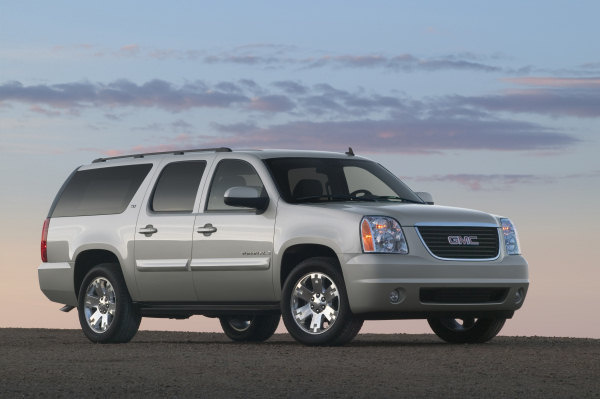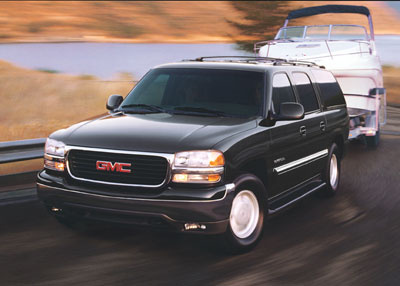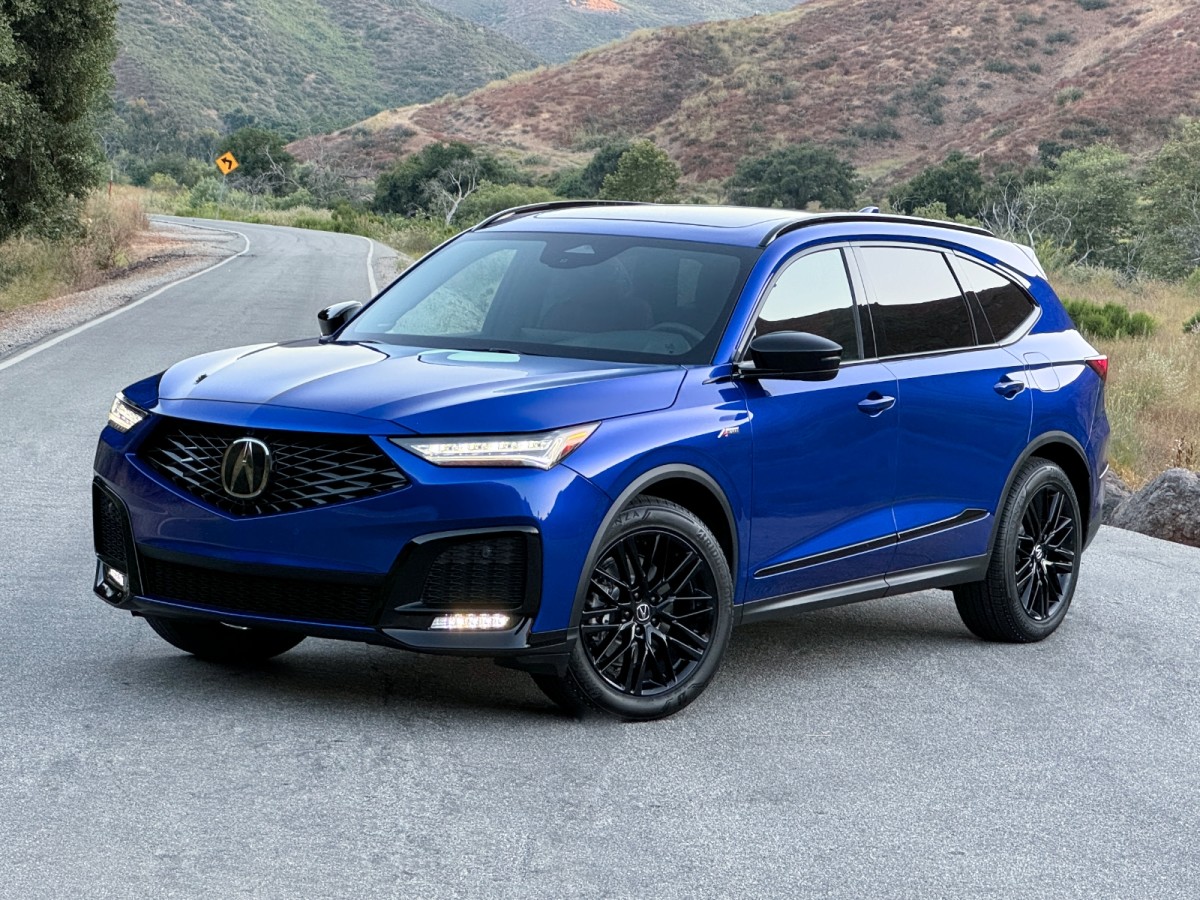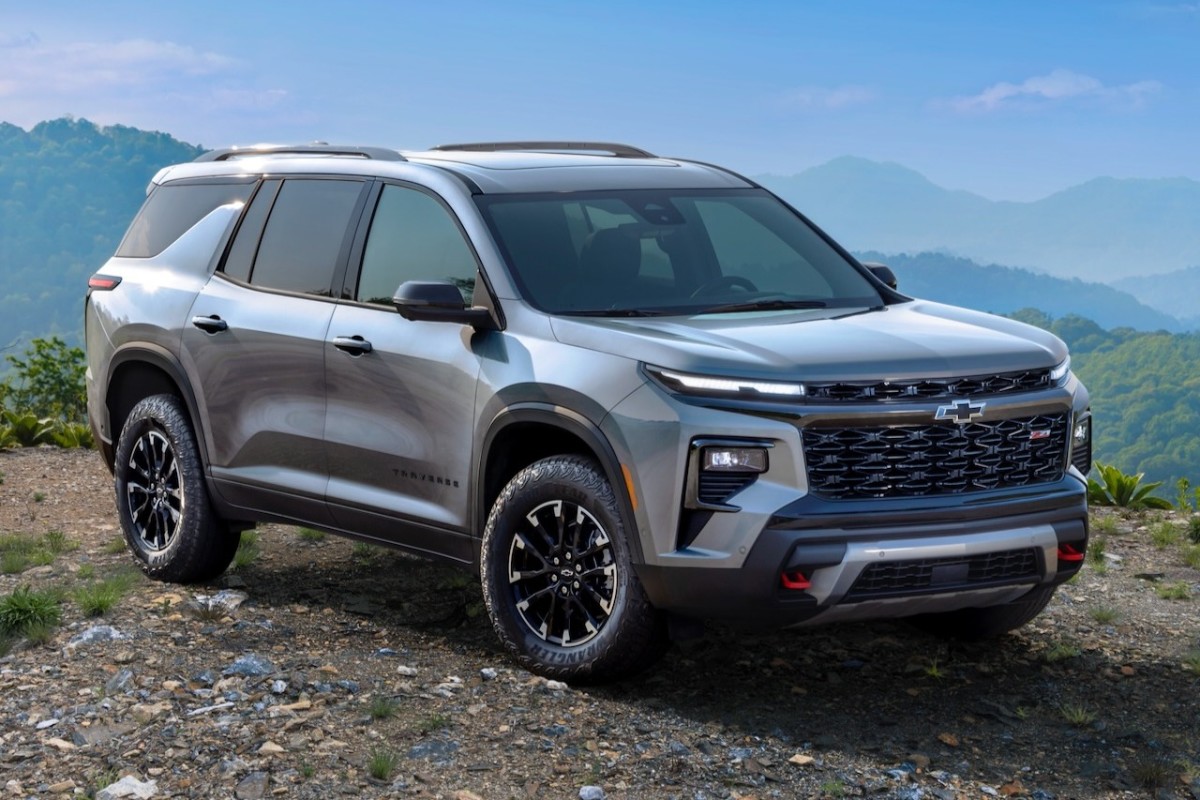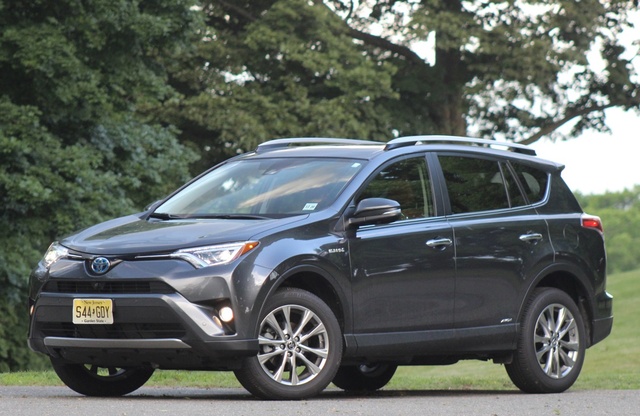The GMC Yukon is a full-size SUV that was introduced as a competitor to the likes of the Lincoln Navigator more than 30 years ago. It’s always been known for premium amenities, plush materials, and modern technology.
Although the first Yukons were two-door models, four doors soon became the norm. All versions are very roomy and well-appointed, making the Yukon a practical and comfortable family hauler. Each new version has become larger and more sophisticated, and prices for top-spec models now top $100,000. Even so, the Yukon remains comparatively understated by luxury SUV standards, with restrained styling inside and out.
The amount of safety tech on the average Yukon has increased over time, but the most advanced technology is optional rather than standard. The Insurance Institute for Highway Safety (IIHS) hasn’t crash tested the Yukon in any of its generations, and when you look at the National Highway Traffic Safety Administration (NHTSA) ratings, most models top out at four stars, and even with modern equipment, the GMC Yukon still only gets a three-star rating for rollovers.
Every Yukon, though, offers lots of interior space, advanced features (for their time) and an imposing presence. Our buyer’s guide looks at how this full-size SUV has evolved over the course of five generations, the best and worst versions to buy, and how much you can expect to pay for one.
GMC Yukon Buying Guide: Cost, Reliability, and the Best Years to Buy
- Frequently Asked Questions
- GMC Yukon Pros and Cons
- GMC Yukon Generations
- Fifth Generation (2021–Present)
- Fourth Generation (2015–2020)
- Third Generation (2007–2014)
- Second Generation (2000–2006)
- First Generation (1992–1999)
Frequently Asked Questions
Which GMC Yukon years are the best?
Data from CarComplaints.com suggests that late third-generation and fourth-generation GMC Yukon models have fewer complaints than the other model years. If you want to narrow things down a bit more, Consumer Reports pinpoints 2012 and 2020 as model years with higher owner satisfaction as well as better predicted reliability.
What are the worst GMC Yukon years?
Two clear model years that receive a lot of complaints according to CarComplaints.com: 2007 and 2015, which are both the first model years of a new generation of GMC Yukon. There are a lot of powertrain complaints for 2007 models, the majority of which center around excessive oil consumption. The 2015 models receive the most complaints overall, primarily due to taillights not working properly. CarComplaints.com dubs this model year the worst year to buy. Consumer Reports also cites a low reliability rating and points to issues with the climate system, steering, and suspension.
Is a used GMC Yukon a good deal?
A used Yukon can be a good deal. The 2018 model has increasing reliability and owner satisfaction according to Consumer Reports, and you should be able to find one for $21,000 to $32,000. The 2020 model is, by all accounts, the best year to buy, and that tops out at around $46,000, but if you don’t need all the bells and whistles, you can probably find a really nice example for around $30,000. If an older model suits, look at late third-generation examples. The 2012 model is a steal, with prices ranging from $9,000 to $12,000, and it has excellent reliability ratings and owner satisfaction.
GMC Yukon Pros and Cons
Pros:
- Powerful engine
- Plenty of cargo space
- Spacious third row
Cons:
- Poor fuel economy
- Uncomfortable seats
- Interior materials feel cheap
GMC Yukon Generations
Fifth Generation (2021–Present)
This latest generation of GMC Yukon arguably made the biggest visual leap when it went on sale in 2021, as the LED lights, bold grille, and chiseled exterior lines struck a handsome and modern pose. Interior upgrades included a 10.25-inch infotainment system, a push-button gear system on the dash, nine camera views, tri-zone climate control, and an eight-inch digital gauge cluster. This generation also marked the introduction of independent rear multilink suspension with coil springs, which brought the additional benefit of a lower floor, creating more cargo area and passenger space.
The off-road focussed Yukon AT4 trim level was also new for this generation, kitted out with GMC’s Active Response 4WD system, a front skid plate, an approach angle of nearly 32 degrees, and all-terrain tires. It’s available with four-corner air ride adaptive suspension and the manufacturer’s Prograde Trailering system, which increases max towing capacity to 8,200 pounds. It’s also worth noting that even the base Yukon—the Yukon SLE—and the lower-mid SLT are available with four-wheel drive.
The other big change for this generation was a 277-horsepower 3.0-liter inline-six turbocharged diesel engine option. This was in addition to the base 355-horsepower 5.3-liter V8 and 420-horsepower 6.2-liter V8. A 10-speed automatic transmission was standard across the lineup.
As of this writing, the current Yukon (and the longer-wheelbase GMC Yukon XL) and their Chevrolet Tahoe twin are the only full-size, three-row SUVs that still have a V8 engine, and they’re also the only ones with a turbodiesel (called Duramax).
There were only minor changes between 2022 and 2024. The 2022 model added GM’s “Buckle to Drive” feature, which prevents the driver from shifting out of park if their seatbelt is not buckled, while 2023 saw a new top-end Yukon Denali Ultimate trim, including a Bose 18-speaker sound system, full-grain leather seats, and GM’s Super Cruise hands-free driver assistance tech. For 2024, there was simply a minor update to the OnStar connected safety service.
A more far-reaching update for the 2025 model year brought updated interior and exterior styling, a new 16.8-inch infotainment screen with Google built in, and a new AT4 Ultimate trim level. Other improvements included 28 additional horsepower for the diesel engine, and an optional night vision system.
Though reliability hasn’t been great so far this generation, feedback suggests 2023 models are holding up the best. Warranty coverage is par for the course, with a 3-year/36,000-mile bumper-to-bumper warranty and a 5-year/60,000-mile powertrain warranty.
With all these modern amenities comes a modern price tag. As of late 2025, the MSRP starts at about $72,000 and goes above $100,000 for top-spec Denali Ultimate models. Used prices kick off at about $38,000 if you want one with respectable mileage for its age.
Fourth Generation (2015–2020)
For 2015, the Yukon sat atop a new platform and received significant interior and exterior design upgrades. These included fold-flat second- and third-row seats, multiple USB-A ports, a standard eight-inch infotainment touchscreen system, and a standard Bose sound system. This generation also increased sound-deadening materials and added laminated glass for the windshield and front windows to reduce cabin noise.
You still had a 5.3-liter V8 in non-GMC Yukon Denali trims and a 6.2-liter V8 in the Denali, but they were respectively upgraded to 355 and 420 horsepower increase both power and efficiency. There was a six-speed automatic transmission mated to the 5.3-liter engine and an eight-speed automatic with the 6.2-liter unit.
The big connectivity change for 2016 was the addition of Apple CarPlay and Android Auto, while other updates included capless fuel tanks, and a hands-free power liftgate on Yukon SLT models. There was also more modern safety functionality, such as a lane departure warning system, a forward collision alert, and automatic high beams.
More safety tech arrived in 2017, including a teen-driver management system, automatic emergency braking, and a rear-seat reminder. In terms of amenities, you had heated and ventilated front seats on the SLT and Denali trims and a standard head-up display on the Denali.
Though 2018 was considered a mid-life refresh, the updates were minor. This model added LED daytime running lights for all trims, and the Denali got a redesigned grille and a 10-speed automatic transmission. To close out this generation, 2019 and 2020 don’t get any major updates, save for a Graphite Edition package on the SLT trim, which included some previously Denali-only features, but other than that, you were looking at nothing more than new paint colors. One thing to note: if you like adjustable pedals, 2020 was the last model year they were offered on the GMC Yukon.
This generation had a rocky start with engine and transmission issues and, even with its comparatively low $16,000 to $20,000 prices, it’s probably not worth it. Plus, if you want Apple CarPlay or Android Auto, you’ll have to go for a 2016 model anyway. Read the owner satisfaction surveys and 2018 and 2020 come out on top – especially the 2020, prices for which range from around $29,000 to $45,000.
Third Generation (2007–2014)
The third generation of the GMC Yukon upped the refinement game, with a much smarter interior, better ride, and improved handling. Owner satisfaction ebbs and flows throughout this generation, hitting a high between the 2010 and 2012 model years, then dropping back down. This generation sat on a new body-on-frame platform and received a new hood, front fascia, and taillights, along with a more upright stance. The interior got faux wood trim, chrome accents, and a new gauge cluster.
Both the 4.8-liter and 5.3-liter engines were carried over from the previous generation, with the addition of GM’s Active Fuel Management cylinder deactivation system, which added one to two mpg to the highway mileage by shutting down the cylinders when they’re not needed. A new 395-horsepower 6.2-liter V8 was also available on the Denali models.
The big news for this generation came in 2008, when GM added a two-mode hybrid to the lineup. Equipped with a 332-horsepower, 6.0-liter V8, and two 80-horsepower electric motors, these full-size SUV hybrids delivered 20 mpg in both city and highway driving.
The 2009 model marked the beginning of modern tech upgrades, with available features such as Bluetooth phone pairing, a rearview camera that didn’t require navigation, and a navigation system that offered real-time traffic updates. A six-speed automatic transmission replaced the previous four-speeder on the 5.3- and 6.2-liter engines. The latter engine received a power increase, and the 4.8-liter engine left the lineup.
A mid-cycle refresh arrived in 2010, with some front-end design changes, simplified trim offerings, standard front-seat side airbags, and a new USB-A port for the audio systems.
The next four years saw minimal changes, but included an updated OnStar system in 2011, a hard-drive-based navigation system in 2012, the discontinuation of the hybrid in 2013, and more standard equipment for the base SLE trim in 2014, including remote start, a heated steering wheel, rearview camera, power-adjustable pedals, and rear parking sensors.
Prices for this generation range from around $6,000 to $16,000. The 2012 model has few owner complaints and high owner satisfaction, this might be the one to seek out at dealerships – and don’t forget to take a test drive. We’ve seen 2012 Yukon SLEs priced at about $9,000 and Denalis at $13,000.
Second Generation (2000–2006)
The second-gen GMC Yukon added more safety features and more modern amenities—and owner satisfaction remains high. While reliability is relatively good, the year with the most owner complaints is in the mid-cycle 2003 model, which is known for engine issues.
In terms of design, this generation ditched two-tone paint and opted for more curved edges. The interior also offered the choice between front bucket seats or bench seats. Other notable changes included standard front side-impact airbags and automatic headlights, as well as an optional power-operated sunroof and nine-speaker sound system. Initially, there were two engine options: a 275-horsepower, 4.8-liter V8 and a flex-fuel 5.3-liter V8 that delivered 285 horsepower. A third engine option arrived in 2001, a 320-horsepower 6.0-liter V8, along with some new colors and interior trim.
The large SUV got its mid-life refresh in 2003. While the exterior received few if any changes, the interior got a new center console and instrument panel, while new optional features included a StabiliTrak stability control system, dual-stage airbags, power adjustable pedals, XM Satellite radio, three-point seat belts for second-row passengers, and an upgraded Bose sound system.
The latter half of this generation heralded new packaging options and the ever present paint color changes. In 2004, the 4.8-liter and 5.3-liter V8s received 10 extra horsepower, and the 6.0-liter V8 got another five horsepower, followed by another 10 more in 2005. Also in 2005, the OnStar system got Gen 6 hardware and was standard on all trims. Touchscreen navigation became optional, and all models got an overhead rear liftgate with separate liftglass.
There were minor changes in 2006, including making StabiliTrak and steering wheel-mounted audio controls standard on all trim levels. This was also the year that GMC combined the OnStar and XM Satellite Radio antennas into one unit.
Owner satisfaction for second-generation GMC Yukons is high, yet pricing is fairly affordable, ranging from about $3,000 to $7,000. The 2002 and 2006 models seem to have the lowest number of owner complaints, and you’ll top out at about $5,000 and $7,000, respectively if you opt for either of those.
First Generation (1992–1999)
Built on a truck platform, the GMC Yukon entered the scene for the 1992 model year and, as GMC said, it was ‘designed to be the ultimate expression in large SUVs and engineered to deliver the latest in technology and refinement’. Originally, it came only as a two-door model and was equipped with a 210-horsepower, 5.7-liter V8 engine.
The first refresh for the GMC Yukon occurred in 1994, with a revised front end. In 1995, bigger changes occurred with the addition of a four-door model, a new interior, and its first driver’s side airbag.
The engine was revised in 1996, the result of which was an extra 40 horsepower and greater fuel efficiency. Two-door models were now available with 2WD, electronic 4WD shifting, daytime running lights, and illuminated entry. The two-door model entered its final year of production in 1997, which was also when speed-sensitive power steering and a passenger-side airbag were added.
Luxuries such as a programmable Homelink garage door opener, optional heated front seats, air conditioning for rear-seat passengers, and the AutoTrac automatic 4WD option appeared in 1998. This was also the year that the Denali sub-brand appeared. Introduced as a concept in 1997, it went into immediate production, taking direct aim at the Lincoln Navigator. Yukon Denali models offered features that weren’t available on the regular model, including leather seating, power seats, heated front and rear seats, a premium sound system, and wood grain interior accents.
There were few changes in the first-gen Yukon’s final year, although it did mark the first time that GM’s OnStar system appeared in a full-size SUV.
Even though early GMC Yukons are more than 30 years old, Kelley Blue Book lists the fair-market price for this two-door SUV at around $7,000, and reports that owners of these vehicles have higher-than-average satisfaction ratings. Curiously, pricing for the GMC Yukon drops drastically when it is a four-door-only model. Looking at 1996 models that offered both two- and four-door options, the latter was worth a full $6,000 less than the former, so there’s a premium for the uniqueness of a two-door large SUV.

